The publisher gratefully acknowledges the generous support
of the Ahmanson Foundation Humanities Endowment Fund
of the University of California Press Foundation.
Published with the assistance of the Frederick W. Hilles
Publication Fund of Yale University.
Visions of Japanese Modernity
Articulations of Cinema, Nation,
and Spectatorship, 18951925
AARON GEROW

University of California Press
BERKELEY LOS ANGELES LONDON
University of California Press, one of the most distinguished university presses in the United States, enriches lives around the world by advancing scholarship in the humanities, social sciences, and natural sciences. Its activities are supported by the UC Press Foundation and by philanthropic contributions from individuals and institutions. For more information, visit www.ucpress.edu.
University of California Press
Berkeley and Los Angeles, California
University of California Press, Ltd.
London, England
2010 by The Regents of the University of California
Library of Congress Cataloging-in-Publication Data
Gerow, Aaron Andrew.
Visions of Japanese modernity : articulations of cinema, nation, and
spectatorship, 18951925 / Aaron Gerow.
p. cm.
Includes bibliographical references and index.
ISBN 978-0-520-25672-9 (cloth : alk. paper)
ISBN 978-0-520-25456-5 (pbk. : alk. paper)
1. Motion picturesJapanHistory19th century. 2. Motion picturesJapanHistory20th century. I. Title.
PN 1993.5.J3G45 2010
791.43095209041dc22 2009030995
Manufactured in the United States of America
19 18 17 16 15 14 13 12 11 10
10 9 8 7 6 5 4 3 2 1
This book is printed on Cascades Enviro 100, a 100% post consumer waste, recycled, de-inked fiber. FSC recycled certified and processed chlorine free. It is acid free, Ecologo certified, and manufactured by BioGas energy.
To my parents
Contents
Illustrations
Acknowledgments
Many years have passed since I embarked on the road to writing this tome, a path that at times seemed interminable, with many detours and not a few potholes. Many individuals and institutions helped me reach my destination, and I am immensely grateful for their support. There are too many to name here, but I would like to at least touch the tip of the proverbial iceberg and mention some of the most prominent.
Kudos go first of all to my first two advisors, Professors Dudley Andrew and Iwamoto Kenji. The former first taught me the way of a good scholar and then valiantly endured the last frantic months of my writing the initial manuscript; the latter took me under his gentle wing and introduced me to the world of film research in Japan. To both men I am eternally grateful.
My research for this book was made possible financially by several organizations. I initially went to Japan on a very generous grant from the Japan Foundation. Film viewing at the Library of Congress, which provided a start to this research, was supported by funds from the Northeast Asia Council of the Association for Asian Studies. Yano Kazuyuki and the Yamagata International Documentary Film Festival helped me stay in Japan while also providing the wonderful opportunity for me to program films and edit Documentary Box. My universities, Yokohama National University, Meiji Gakuin University, and Yale University, helped me further develop my ideas while teaching, and my students deserve recognition for their penetrating questions and illuminating responses. At Yale, the Morse Junior Faculty Fellowship in the Humanities gave me time to polish the manuscript, the Frederick W. Hilles Publication Fund helped subvent publication, and the A. Whitney Griswold Faculty Research Fund helped prepare the text for publication in Japanese at the University of Tokyo Press. My editor there, Hasegawa Hajime, and my translators, Hase Masato, Yamamoto Naoki, and Shimura Miyoko, all contributed to cleaning up the English text as well. I especially thank Mary Francis, Jacqueline Volin, and Bonita Hurd of the University of California Press, and the anonymous readers for their direction and comments.
Along the way, I had the opportunity to publish sections of this work in Japanese and publish related research in English. I thank the editors of Yuriika, Eiz gaku, Eigagaku, Iconics, CineMagziNet, and Screening the Past, as well as Alan Tansman, Roland Domenig, Jeannette Paulson, Carole Cavanaugh, and Dennis Washburn, for the opportunity to present my work and for their comments and suggestions along the way. I have also presented aspects of this research at many universities and conferences, and I express my gratitude both to those who invited me and those who attended and asked questions.
gaku, Eigagaku, Iconics, CineMagziNet, and Screening the Past, as well as Alan Tansman, Roland Domenig, Jeannette Paulson, Carole Cavanaugh, and Dennis Washburn, for the opportunity to present my work and for their comments and suggestions along the way. I have also presented aspects of this research at many universities and conferences, and I express my gratitude both to those who invited me and those who attended and asked questions.
Many individuals and institutions assisted me during all stages, from researching to writing. Saiki Tomonori, Sasaki Yoriaki, Okajima Hisashi, Okada Hidenori, Tochigi Akira, and Irie Yoshir of the National Film Center of the Museum of Modern Art, Tokyo; Tajima Ry
of the National Film Center of the Museum of Modern Art, Tokyo; Tajima Ry ichi of Nihon University; and everyone at the Kawakita Memorial Film Institute and the Tsubouchi Memorial Theater Museumall were invaluable in helping me collect materials for this study. I also received generous support in Japan from Sat
ichi of Nihon University; and everyone at the Kawakita Memorial Film Institute and the Tsubouchi Memorial Theater Museumall were invaluable in helping me collect materials for this study. I also received generous support in Japan from Sat Tadao, Takeda Kiyoshi, Kond
Tadao, Takeda Kiyoshi, Kond K
K jin, Thomas Rohlich, Kat
jin, Thomas Rohlich, Kat Mikir
Mikir , Yomota Inuhiko, Komatsu Hiroshi, Iijima Tadashi, Tsukada Yoshinobu, Ueno Toshiya, Murayama Ky
, Yomota Inuhiko, Komatsu Hiroshi, Iijima Tadashi, Tsukada Yoshinobu, Ueno Toshiya, Murayama Ky ichir
ichir , Mizuguchi Kaoru, Yoshimi Shunya, and Sugawa Yoshiyuki. Tom Gunning and Donald Kirihara offered detailed comments on sections of this manuscript, and I also recognize friends such as Ab Markus Nornes, Noriko Aso, Alan Christy, Darrell Davis, and Mitsuyo Wada-Marciano for their selfless input. Heidi Kenaga and Michael Raine were godsends in their cheerful willingness to collect materials from across the ocean. And I salute the other members of my original dissertation committee, Kathleen Newman, Lauren Rabinovitz, Stephen Vlastos, and Mitsuhiro Yoshimoto, for their patience and support. Tom LaMarre, Joanne Bernardi, Charles Musser, John MacKay, Jennifer Robertson, Edward Kamens, Chris Hill, and John Treat are some of my other colleagues whom I offer deserved thanks for their assistance.
, Mizuguchi Kaoru, Yoshimi Shunya, and Sugawa Yoshiyuki. Tom Gunning and Donald Kirihara offered detailed comments on sections of this manuscript, and I also recognize friends such as Ab Markus Nornes, Noriko Aso, Alan Christy, Darrell Davis, and Mitsuyo Wada-Marciano for their selfless input. Heidi Kenaga and Michael Raine were godsends in their cheerful willingness to collect materials from across the ocean. And I salute the other members of my original dissertation committee, Kathleen Newman, Lauren Rabinovitz, Stephen Vlastos, and Mitsuhiro Yoshimoto, for their patience and support. Tom LaMarre, Joanne Bernardi, Charles Musser, John MacKay, Jennifer Robertson, Edward Kamens, Chris Hill, and John Treat are some of my other colleagues whom I offer deserved thanks for their assistance.
Finally, I offer deep and eternal thanks to a man whose contribution to my research was both special and unending: Makino Mamoru. Beyond selflessly offering up his collection and his food, he shared with me his vast knowledge of such topics as prewar censorship and magazine publishing, and has supported younger scholars like me out of a belief in the future possibilities of Japanese film studies. He will forever be my


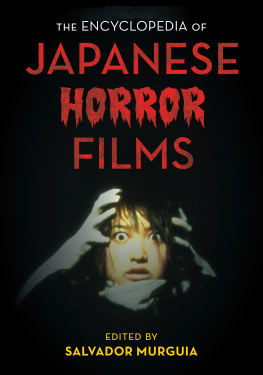
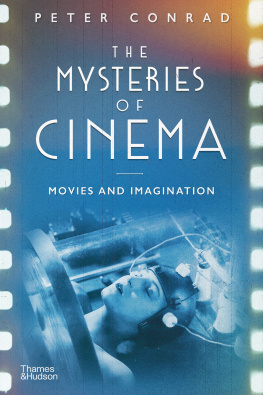
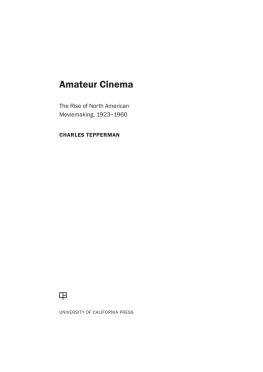
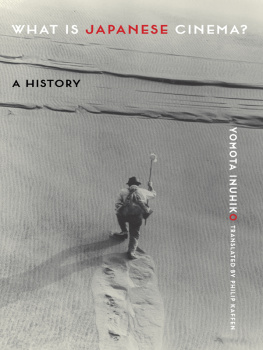

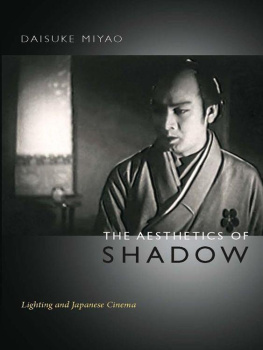
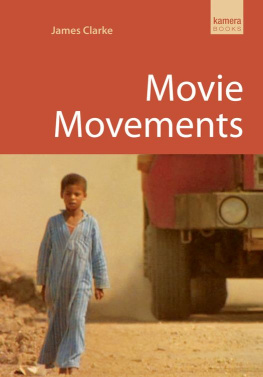
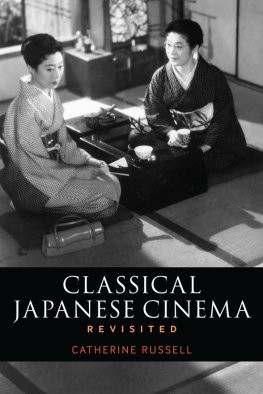
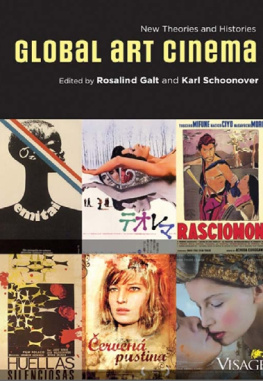
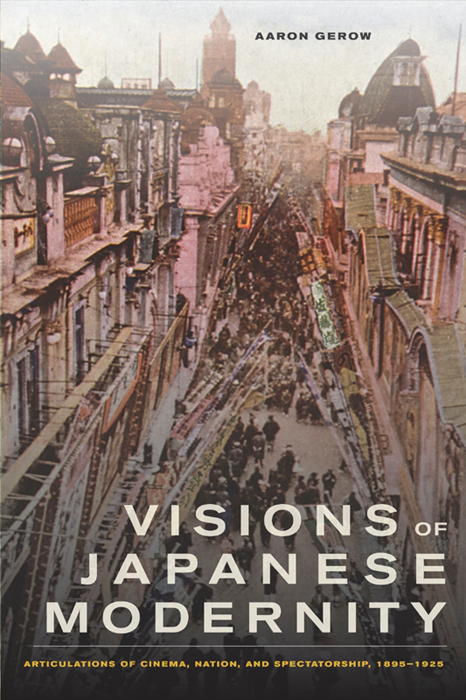

 gaku, Eigagaku, Iconics, CineMagziNet, and Screening the Past, as well as Alan Tansman, Roland Domenig, Jeannette Paulson, Carole Cavanaugh, and Dennis Washburn, for the opportunity to present my work and for their comments and suggestions along the way. I have also presented aspects of this research at many universities and conferences, and I express my gratitude both to those who invited me and those who attended and asked questions.
gaku, Eigagaku, Iconics, CineMagziNet, and Screening the Past, as well as Alan Tansman, Roland Domenig, Jeannette Paulson, Carole Cavanaugh, and Dennis Washburn, for the opportunity to present my work and for their comments and suggestions along the way. I have also presented aspects of this research at many universities and conferences, and I express my gratitude both to those who invited me and those who attended and asked questions.